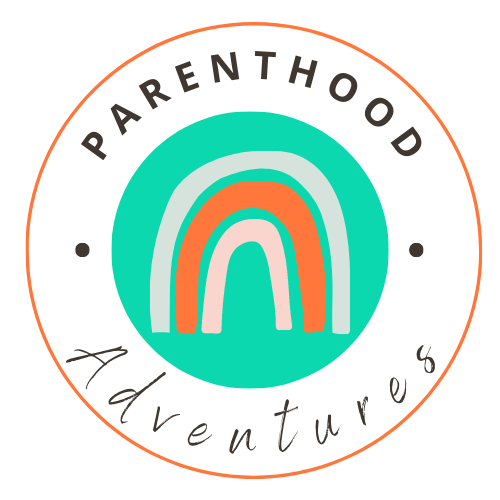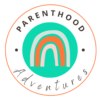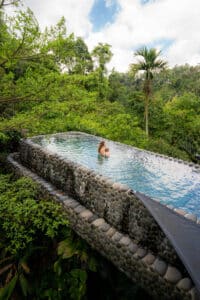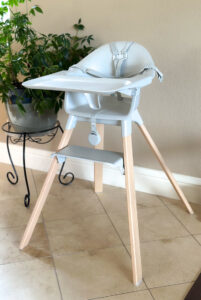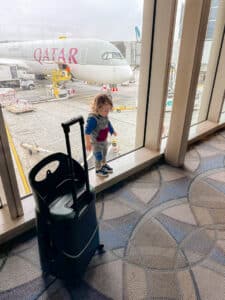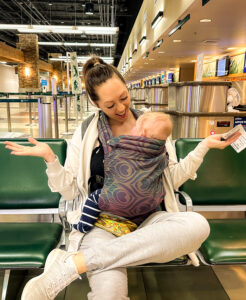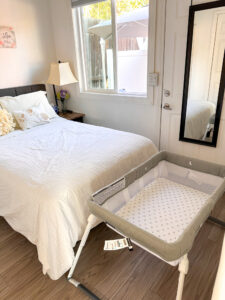How to Pump and Store Breastmilk when Traveling without Baby (Firsthand Experience)
As a traveling mom who often works on the road, every now and then I fly without my son, but naturally still need to pump breast milk while we’re apart.
I had an opportunity come up about 2.5 months after my son was born to speak at a conference, and though I was worried about getting through TSA with breastmilk and the associated items, I made it through (and have several times since).
Here’s what you need to know about pumping and traveling with breastmilk:
Your Pump
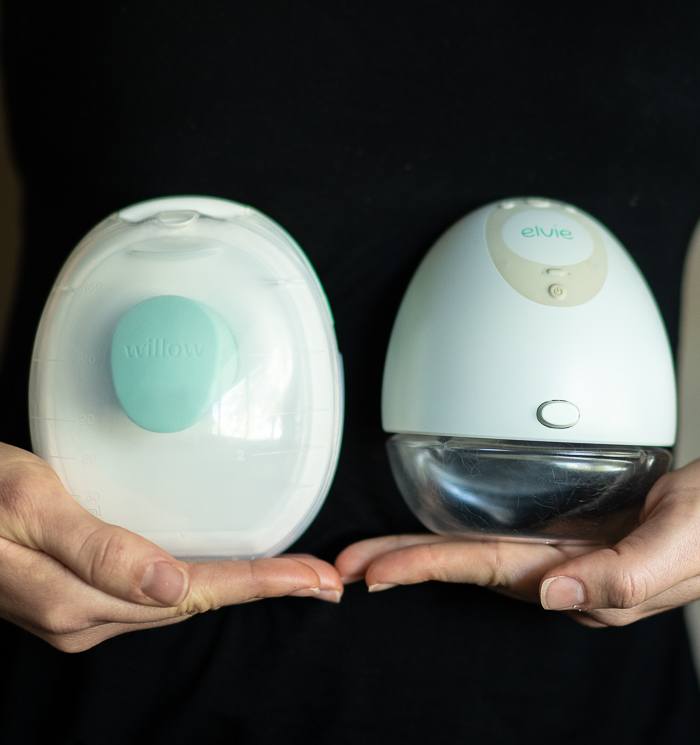
You’re allowed to bring your pump on board the aircraft without it counting against your carry-on baggage allowance.
Although there are in-seat plugins, I can’t quite picture strapping on my pumping bra and sitting in my seat hooked up to a Spectra. More power to anyone who chooses to go that route.
Alternatively, one could use a hand pump and put a scarf over yourself, but I much prefer wearable pumps. They’re light, discreet (ish), and easy.
They’re pricey, but for me they have been SO worth it. I have both the Elvie and the Willow Go pumps and love that I can pump anywhere, any time. I’ve pumped while driving a car, while on a flight, while cooking dinner, you name it. You can read my comparison of them here.
On my first flight, I brought both of my wearables just to be extra sure that I didn’t run into any issues, and I’m glad I did, since I forgot an essential part of one of them! If you don’t have two sets, which I can understand might be overkill, I’d bring a hand pump as backup.
Cleaning
The best $18 I ever spent was on my portable bottle and pump cleaning station (I’m not kidding). It has made keeping everything sanitary in the airplane and airport possible. I bring unscented soap with me in a smaller carry-on size shampoo bottle (I like the Humangear refillable silicone bottles), and use the changing table on the plane as a table/cleaning station.
I also bring a refillable water bottle with me to the airport and fill up with filtered water to clean the pump parts with, as the tap water on a plane is often not potable and who knows what the state is of the trucks that transport it? I’d rather not risk it when it comes to my baby.
Alternatively you can ask a flight attendant for bottled water. I try to avoid this when possible to reduce my plastic use, but internationally it may be your only option.
Once at your destination, if you’re in a hotel room with a microwave, you can steam clean your pump parts with these bags. Each one can be used up to 20 times, and they’re cheap!
Storage
You’re allowed to bring a storage bag and frozen ice packs with you through TSA, regardless of whether your child is with you and regardless of whether you’ve expressed milk yet or not. There have been some reports by lactating persons about issues with TSA when the packs unfroze, though you’re allowed to have them partially frozen or slushy. We’ll talk more about TSA in the next section, but it’s important you know your rights.
Since I was on a short flight and had access to a fridge and freezer at my destination, I just used a soft-sided Igloo bag and brought enough gel packs to have my bottles completely surrounded. I was still sweating it when my flight home got delayed, as the gel packs were already starting to thaw. For a longer flight, I’d opt for the Yeti Daytrip lunch bag or Yeti Lunchbox. I have one of the larger coolers for camping and, though pricey, they can’t be beat in terms of keeping things cold.
It’s also smart to bring clear bottles so TSA will be able to scan more easily. I brought my glass Philips Avent bottles.
TSA – Know Your Rights
You’re allowed to travel with breastmilk above the 3oz limit, up to a reasonable quantity. Unfortunately this is up to the discretion of the TSA agent and I’ve had to ask for a supervisor before when I was told to pour out water that we needed for my son’s formula (we combo feed). I remained adamant that we were allowed to have it and reminded them that we could possibly be delayed and we needed to be prepared. Thankfully the supervisor agreed.
After traveling many times with breastmilk, I’ve found you always need to leave ample extra time for TSA, as they’ll perform extra screening on the liquids.
Even though breast milk is exempt from the 100ml/3oz limit, if you have more breast milk than that per bottle, they’ll need to perform extra checks on it. Be sure to let the agent know before you go through the scanner that you’re carrying breast milk with you, and separate it out for additional screening.
If the bottle is clear, the extra screening usually involves running it through a machine meant to find bomb particles. They may also open up the container to perform a vapor test, which always makes me nervous because I definitely would cry over spilled milk. They are not allowed to insert anything into the liquid. It may be helpful to have TSA’s own rules printed out in case the officer is unfamiliar with the guidelines.
An agent once told me if everything was in separate bottles under 3 oz each, he wouldn’t need to do extra checks. Depending on the length of the trip in the future, I might bring extra just to avoid the headache.
Depending on how long you’ll be away, or if you just want to avoid the issues with TSA or potentially having your packs melt, Milk Stork provides a breast milk shipping service starting at $299. This is more meant for bigger shipments.
Pin me for later:
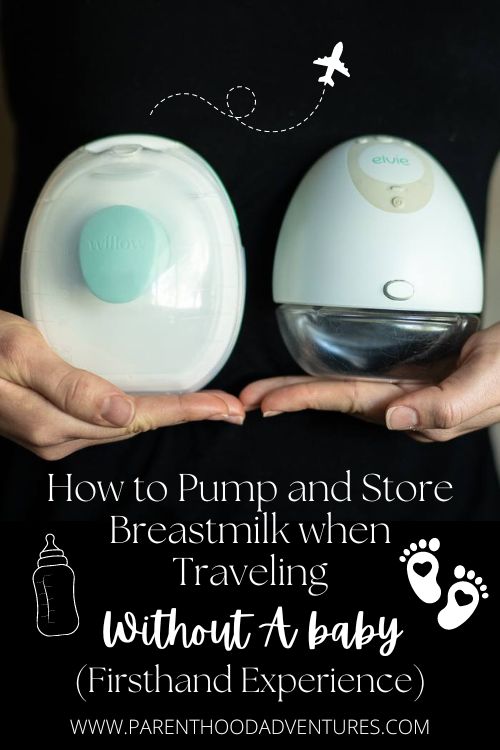
It’s extra work and effort to be able to travel, pump, and store breastmilk, but it’s doable. I hope this post helped you feel more confident about getting it done!
*Some links in this post are affiliate links for products I personally use and love. Any purchase you make through them supports us at no extra cost to you. Thanks so much
